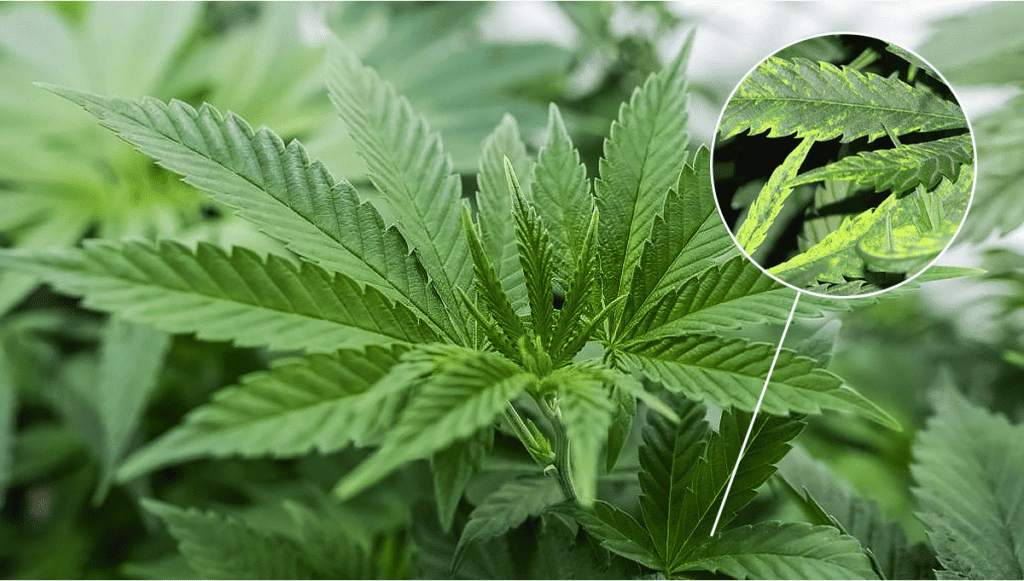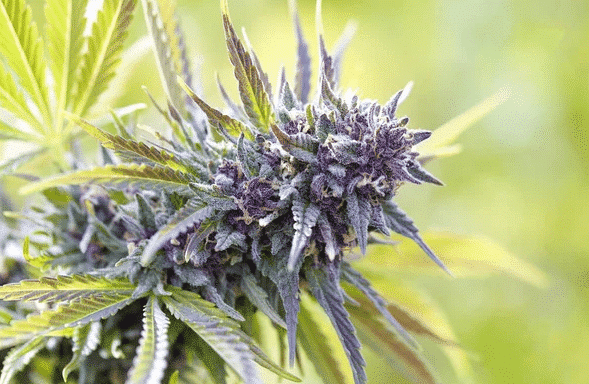No products in the cart.
Marijuana Education
What Is Tobacco Mosaic Virus Weed
Cannabis cultivation requires time, calculated efforts, and other resources ranging from an ideal lighting schedule, a sustainable level of nutrients, and protection from pests and diseases caused by insects and deadly Viruses, the most common of them all being the Tobacco Mosaic Virus Weed.
The tobacco mosaic virus weed was first discovered in 1892 by two scientists as the first virus to infect plants. It is a common virus that infects several plants such as tobacco which it is named after and marijuana plants.
A brief overview of the effects of the Tobacco Mosaic Virus
Although this plant is more common among tobacco plants, it is also harmful to different types of crops as it prevents them from growing. This virus can adapt to different types of growing conditions which enables it to survive and reproduce in climate conditions that are as low as 4° Celsius.
The infected plants appear weak, undersized, nutrient-deprived, and do not grow well. The frail appearance of the plants makes it difficult for the virus to be quickly noticed as it is attributed to a lack of proper nutrients that facilitate plant growth hence, its continuous presence in the plants results in poor yield.
How dangerous is the Tobacco Mosaic Virus to cannabis plants
The damages caused by the Tobacco Mosaic Virus include diminutive growth and low crop yield in cannabis plants. This is as a result of their inability to use up UV light and With time, the virus diffuses into the vascular system of the cannabis plant and spreads from the roots to the leaves of the plant, and infects the quality and size of the buds.
What makes this virus very deadly to the cannabis plant is the absence of a cure once the plant has been infected. The only available solution is to remove the infected plant (s) so that it does not infect other plants.
Vectors and agents of the Tobacco Mosaic Virus
The cannabis plant can become infected by the Tobacco Mosaic Virus when a part of the plant such as the leaf or the stem is splintered or bitten by the insect. The splintered part(s) of the plant are microscopic and serves as an entry point for the virus. The marijuana plant can become infected with the Tobacco Mosaic virus through the following agents:
The grower
Although you might not know this, you can equally infect your cannabis plant. After treating or coming in contact with an infected plant, the virus might stick to your hands or clothes which can become an agent that infects other plants. Also, cannabis growers who are smokers and active patrons of tobacco-infused products can easily infect their plants.
Seeds and Pollen
Sadly, the Tobacco Mosaic virus can be transmitted to plants through seeds and pollen and this is dangerous for subsequent plant growth. This is why cannabis growers must clean their growing rooms and tools using disinfectants to inhibit the growth and spread of the Tobacco Mosaic Virus as well as other viruses that have made the grow room a host. The cleaning process should be done periodically between the plant’s growth cycle to disinfect the grow room.
Insects
Insects are potent disease vectors that infect the plants that they feed on with diseases such as the popular Tobacco Mosaic Virus even though they are immune to the virus. Their bodies serve as a potent disease carrier that transmits the virus to the plant that they feed on.
Soil or water
Under a grow room temperature of 4° Celsius, the Tobacco Mosaic Virus can thrive in soil and water for a very long time. When the soil is infected, it is easier to affect the root which then spreads rapidly to the leaves and destroys the plant. That is why it is not advisable for cannabis growers to use the same soil for more than a single occasion to restrict the transfer of harmful viruses and pathogens.
Signs of Tobacco Mosaic Virus
The severity of the Tobacco Mosaic virus is a result of its highly contagious pathogens which is difficult to identify in the early weeks after the plant has been Infected. This results in frail-looking plants that look like they are nutrient deprived after they have been transplanted.
To prevent the spread of the virus from infecting other healthy plants, cannabis growers should watch out for the following signs.
Stunted growth
One of the symptoms of the Tobacco Mosaic Virus is slow plant growth which does not make the root of the plant grow well. This results in wilted, and frail-looking plants with stunted growth. As the time within which the plant was infected gets longer, the signs progress and results in stunted growth in plants.
Small bud size
The Tobacco Mosaic Virus has a reputation for leaving traits wherever it goes and one of such events that depicts that the cannabis plants are infected is a sizeable reduction in bud size. The buds of infected plants look small, deprived of nutrients, and have a low content of THC and CBD cannabinoids that makes them less palatable when consumed.
Change in the color of leaves and stem
This is one of the signs that can be noticed within the first few weeks after the plant has been infected. The color of the leaves and stems looks burnt and changes to brown color and in some cases, yellow or pale green lines appear on the new and old leaves. Another discoloration that is a result of the virus is the emergence of a mosaic pattern in either white dots or blotched shades of light green.
The stems are not sparred from discoloration either as they become weak and become red or purple.
Deformed leaves
Some diseases are capable of causing deformities in plants and the Tobacco Mosaic Virus happens to be one of the very few that does such to plants. These deformities may appear in the form of leaves that are twisted at the tips or bent at the sides with webs on them. In environments with hot temperatures, the deformity is depicted in the root of the plant that becomes weak with indications of necrosis.
Treating plants with Tobacco Mosaic Virus
As a result of the lack of cure for plants infected with the Tobacco Mosaic Virus, the only options available are preventive measures which should be taken by growers so that the other plants do not get infected. The following clues have proven to be very useful in preventing the spread of the virus among cannabis plants.
Plant genetics
Genetics plays an important role in the growth and development of healthy cannabis plants. One way to ensure that your plants have strong genetics is by growing plants from the seed. This affords the grower with an opportunity to choose a healthy and potent strain from a highly regarded seed bank to eliminate the risk of planting already infected seeds with weak genetics.
Hygiene
The grow room or any area where the cannabis is planted should be kept clean. You can keep it clean by sanitizing the grow room, tidying it, and getting rid of dead plant material.
Apply caution
Growers should apply extreme caution when dealing with their cannabis plants by practicing hygiene to prevent transmitting the virus to the plants by accident. They should also check plants periodically for infections because the virus can enter the plant with just a single cut on the stem.
Isolation and remove infected plants
Immediate isolation of infected plants is a very effective way of preventing the spread of the virus to other plants. Even if the grower is skeptical whether the plant has been infected or not, he could still isolate the plant to monitor it for signs of the virus. However, it is advisable to destroy infected crops and to clean up after disposing of them so that the virus does not cling to the hands or clothes and risk infecting another plant.
Conclusion
Although reports assert that the Tobacco Mosaic Virus Weed is one of the most popular viruses that infect plants, there is still no known cure for it and the only way to inhibit the spread of this virus is to remove infected plants among other plants.
Cannabis growers can also prevent the spread of it by practicing hygiene both personally, in the grow rooms, and with equipment that is used for growing cannabis as well as destroying already infected plants. Hopefully, this article was resourceful to growers and can help them identify infected plants and prevent the spread of the virus.






